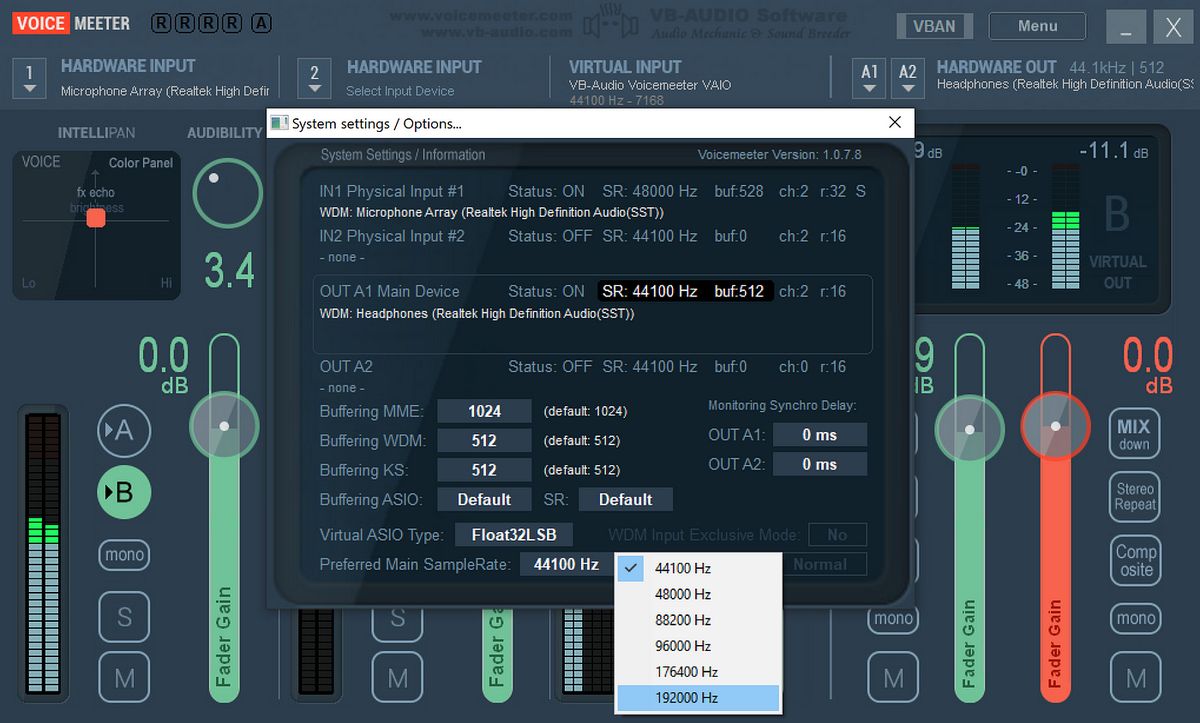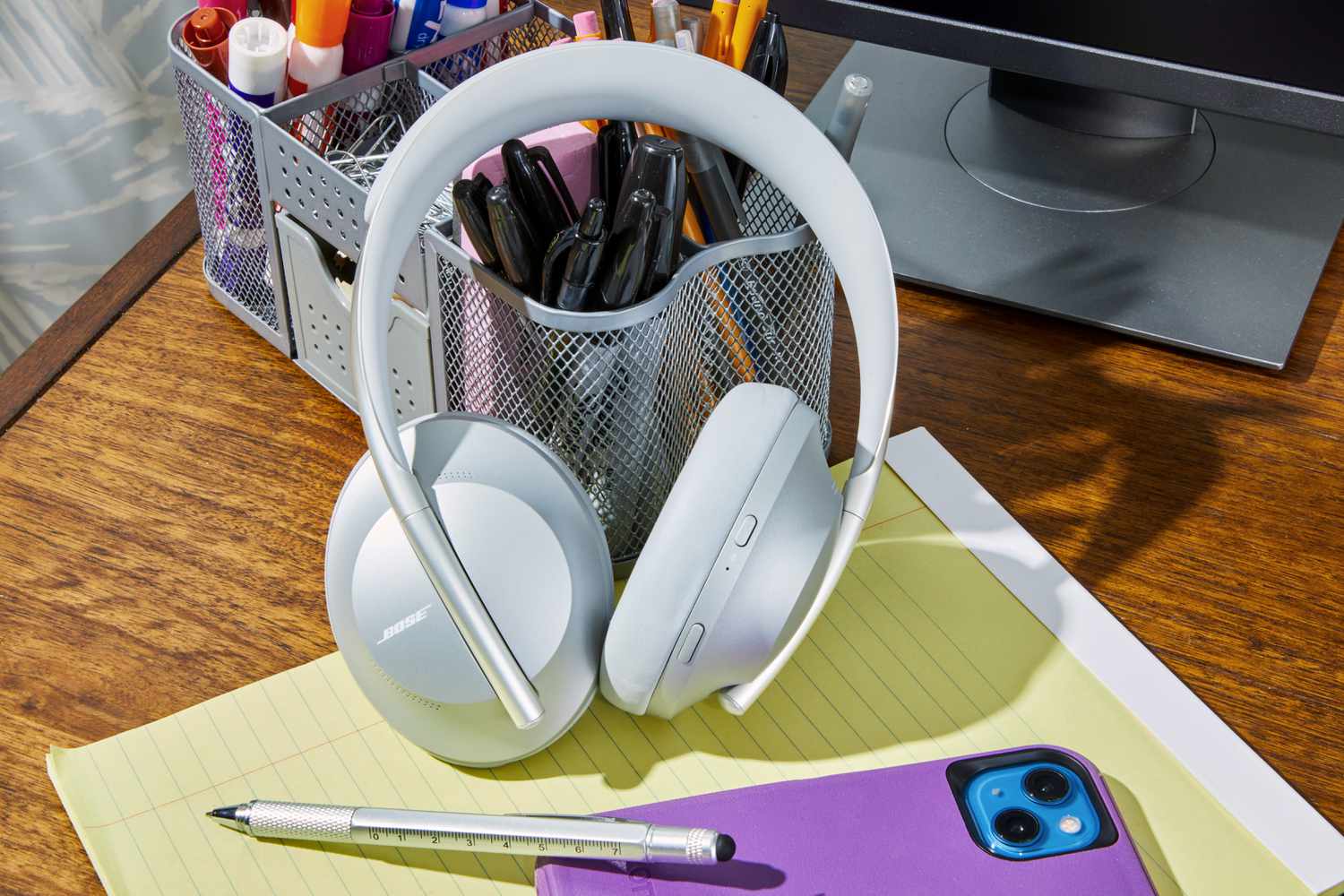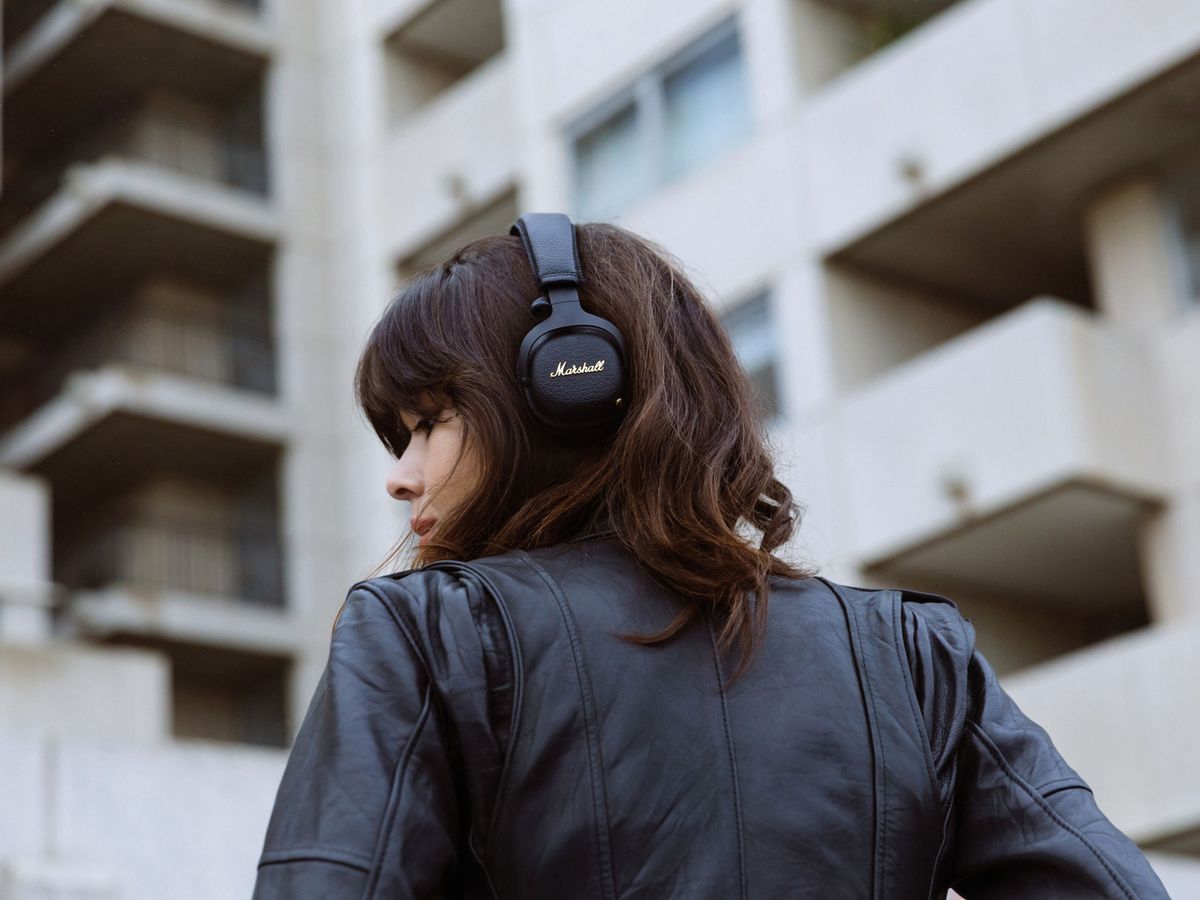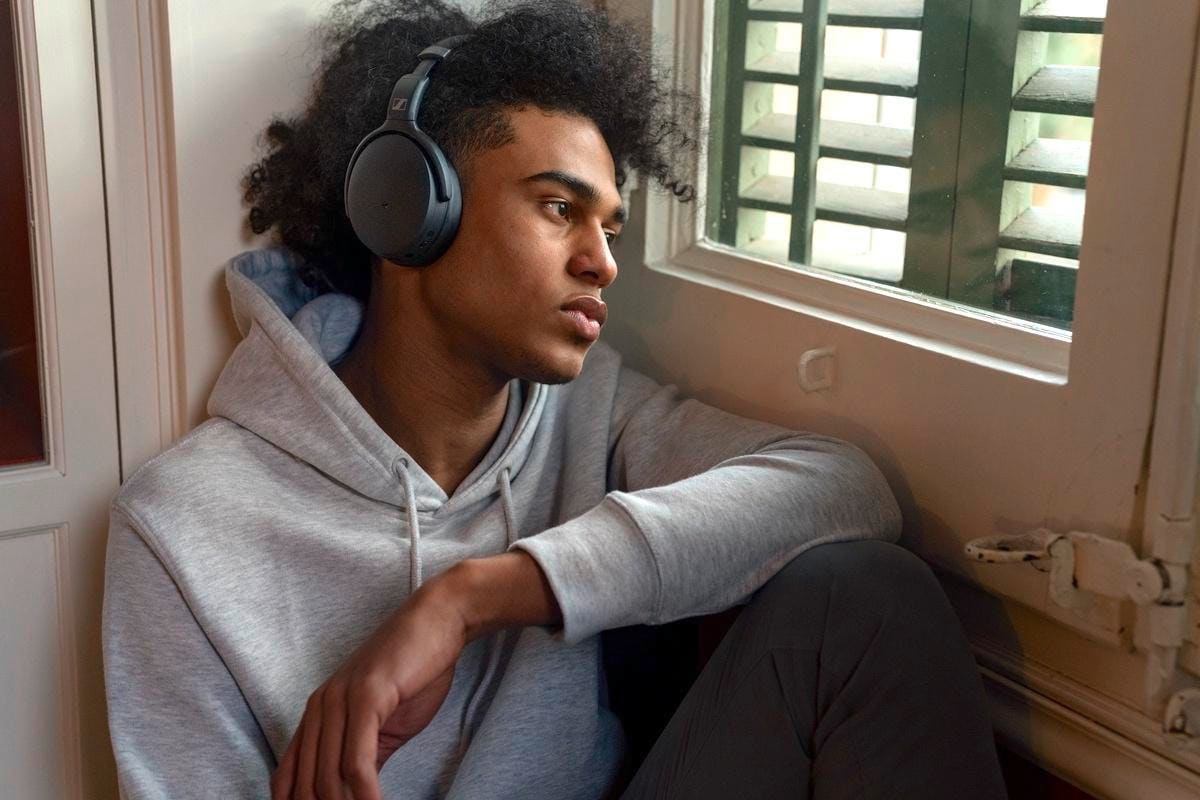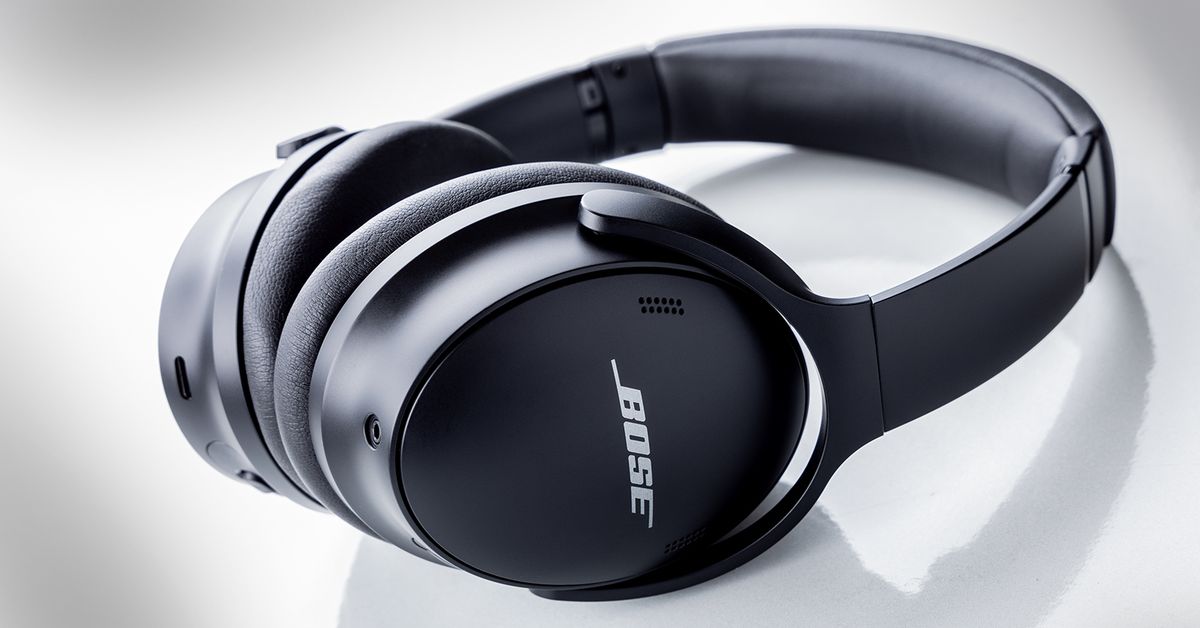Home>Production & Technology>Noise Cancellation>How To Use Noise Cancellation


Noise Cancellation
How To Use Noise Cancellation
Modified: January 22, 2024
Learn how to effectively use noise cancellation to eliminate background noise and enhance your audio experience. Find out how to optimize noise cancellation settings and get the most out of your devices.
(Many of the links in this article redirect to a specific reviewed product. Your purchase of these products through affiliate links helps to generate commission for AudioLover.com, at no extra cost. Learn more)
Table of Contents
Introduction
Welcome to the world of noise cancellation, where tranquility and immersive experiences are at your fingertips. In today’s busy and noisy world, finding moments of peace and quiet can be a challenge. That’s where noise cancellation technology comes to the rescue, offering a way to block out unwanted sounds and create a sanctuary of serenity.
Noise cancellation is a revolutionary technology that has made its way into various devices, including headphones, earbuds, and even smart speakers. It allows you to enjoy your favorite music, podcasts, or movies without the distraction of external noise. Whether you’re a frequent traveler, a student who needs to concentrate, or simply seeking some relaxation time, noise cancellation can transform your audio experiences in ways you never thought possible.
In this article, we will explore the world of noise cancellation, delving into its different types, how it works, and the benefits it offers. We will also provide you with some valuable tips on using noise cancellation effectively, as well as troubleshooting common issues you may encounter.
So, get ready to immerse yourself in a world of sound like never before as we unravel the mysteries of noise cancellation technology. Whether you’re a seasoned user or completely new to this amazing technology, there’s something here for everyone. Let’s dive in!
What is Noise Cancellation?
Noise cancellation is a technology that aims to reduce or eliminate unwanted ambient sounds by creating an anti-noise signal. It allows you to enjoy audio content without the distraction of background noise, providing a more immersive and enjoyable experience. This technology is commonly found in headphones, earbuds, and other audio devices.
The concept of noise cancellation revolves around the principle of destructive interference. When sound waves from the environment meet the anti-noise signal, they cancel each other out, resulting in a significant reduction in audible noise. This cancellation is most effective for continuous, low-frequency sounds such as engine noises, airplane cabin rumble, or the hum of a fan.
There are two primary types of noise cancellation: passive and active.
- Passive Noise Cancellation: Passive noise cancellation, also known as noise isolation, relies on the physical design and materials of the headphones or earbuds to block out external sounds. It involves creating a seal around the ears to prevent sound from entering. This method is effective at reducing high-frequency noises, such as conversations or the clatter of keyboards.
- Active Noise Cancellation: Active noise cancellation, on the other hand, uses advanced technology to actively generate anti-noise to counteract external sounds. It involves built-in microphones that capture and analyze the ambient noise, then create an opposite sound wave to cancel it out. This method is highly effective at reducing low-frequency sounds and is particularly beneficial in noisy environments like airplanes or bustling coffee shops.
Noise cancellation technology has evolved over the years, becoming more sophisticated and refined. In addition to headphones and earbuds, it can also be found in car audio systems, home theater setups, and even in the latest smartphones. Its versatility and effectiveness make it an invaluable feature for anyone seeking an enhanced audio experience.
Now that we have a basic understanding of what noise cancellation is, let’s delve deeper into how it actually works in the next section.
Different Types of Noise Cancellation
Noise cancellation technology comes in various forms, each with its own unique capabilities and applications. Let’s explore the different types of noise cancellation:
- Active Noise Cancellation (ANC): As mentioned earlier, active noise cancellation is a popular and widely-used technique. ANC uses built-in microphones to capture external sounds, analyzes them, and generates anti-noise signals to counteract them. This method is highly effective at reducing low-frequency sounds, such as engine noises or background hum, making it ideal for travelers or those working in noisy environments.
- Adaptive Noise Cancellation (ANC+): Adaptive noise cancellation takes ANC a step further by adjusting the cancellation based on the user’s surroundings. It employs advanced algorithms to continuously monitor and adapt to changes in ambient noise. This type of noise cancellation is particularly beneficial when moving between different environments, providing a seamless and customized listening experience.
- Passive Noise Cancellation: Passive noise cancellation, also known as noise isolation, relies on the physical design and materials of the audio device to block out external sounds. It involves creating a seal around the ears or using specialized ear tips to minimize sound leakage. Passive noise cancellation is effective at reducing high-frequency noises, such as conversations or background chatter.
- Hybrid Noise Cancellation: Hybrid noise cancellation combines the strengths of both active and passive noise cancellation techniques. By integrating both technologies, hybrid noise cancellation provides a comprehensive solution for blocking out a wide range of noises, from low-frequency rumble to high-frequency ambient sounds. This type of noise cancellation is often found in premium audio devices.
- AI-Powered Noise Cancellation: Some cutting-edge audio devices leverage the power of artificial intelligence (AI) to optimize noise cancellation performance. By using machine learning algorithms, these devices can adaptively adjust the noise cancellation settings based on the user’s personal preferences and listening habits. AI-powered noise cancellation ensures a tailored and immersive audio experience.
Understanding the different types of noise cancellation can help you choose the right device that suits your needs and preferences. Whether you require noise reduction while traveling or want to enjoy music without interruption in a noisy environment, there’s a noise cancellation solution available to enhance your audio experience.
How Noise Cancellation Works
Noise cancellation technology is based on the principle of superposition and destructive interference. It works by generating anti-noise signals that effectively cancel out unwanted external sounds. Let’s take a closer look at how noise cancellation works:
Active Noise Cancellation (ANC):
Active noise cancellation involves three main components: a microphone, a speaker, and an electronic circuit. The process can be broken down into the following steps:
- The built-in microphone detects the ambient noise in the surrounding environment.
- The electronic circuit analyzes the captured noise signals and generates an opposite sound wave with the same amplitude but inverted phase.
- The anti-noise signal is then delivered through the speaker, effectively cancelling out the external noise.
- The combination of the original sound wave and the anti-noise wave results in destructive interference, reducing the overall noise level perceived by the listener.
The microphone continuously captures and analyzes the ambient noise, providing real-time adjustments to ensure optimal noise cancellation performance. This dynamic process allows active noise cancellation to adapt to changes in the environment and provide an uninterrupted listening experience.
Passive Noise Cancellation:
Passive noise cancellation, also known as noise isolation, relies on the physical design and materials of the audio device to block out external sounds. Here’s how it works:
- The design of the headphones or earbuds creates a physical barrier that prevents sound from entering the ear.
- A tight seal is created around the ears using over-ear cups, in-ear tips, or noise-isolating materials.
- The materials used in the construction of the device absorb and dampen external sounds, reducing their impact on the listener.
Passive noise cancellation is effective at reducing high-frequency noises like voices or background chatter. It’s particularly useful in situations where ANC may not be available or necessary, such as in quiet environments or when you prefer to minimize the use of electronics.
Understanding how noise cancellation works can help you make the most of this technology. Whether you prefer active noise cancellation for busy environments or passive noise cancellation for more subtle noise reduction, incorporating noise cancellation in your audio setup can greatly enhance your listening experience.
Benefits of Using Noise Cancellation
Noise cancellation technology offers a multitude of benefits that enhance your audio experience and overall well-being. Let’s explore some of the key advantages of using noise cancellation:
- Improved Audio Quality: One of the primary benefits of noise cancellation is the ability to enjoy audio content with enhanced clarity and detail. By minimizing or eliminating background noise, noise cancellation allows you to fully immerse yourself in your music, podcasts, or movies without distractions. You can hear the subtle nuances of instruments, vocals, and sound effects that may have otherwise been muffled by external sounds.
- Reduced Ear Fatigue: Background noise can cause ear fatigue, especially when listening for extended periods. With noise cancellation, you can lower the volume of your audio device, as you don’t need to compete with external noise. This reduces the strain on your ears, allowing for longer, more comfortable listening sessions.
- Increased Concentration and Productivity: Noise cancellation is highly beneficial in noisy environments, such as crowded cafes or bustling offices. By blocking out distracting sounds, it helps improve focus, concentration, and productivity. Students and professionals alike can benefit from noise cancellation, allowing them to study or work without interruptions.
- Stress Reduction: Continuous exposure to noise can increase stress levels and impact overall well-being. Noise cancellation creates a peaceful and tranquil environment, providing a much-needed escape from the cacophony of everyday life. Whether you’re traveling in a noisy airplane or seeking relaxation at home, noise cancellation can promote a sense of calm and reduce stress.
- Better Sleep: Noise-canceling headphones or earbuds can be a game-changer for individuals who struggle with noisy sleeping environments. By blocking out snoring, traffic, or other disruptive sounds, noise cancellation can help you achieve a more peaceful and restful sleep. Some devices even offer specialized sleep modes that play soothing sounds to further enhance your sleep experience.
- Enhanced Travel Experience: Travel can be noisy and exhausting, particularly in airplanes, trains, or busy terminals. Noise cancellation can transform your travel experience by creating a personal oasis of calm amidst the hustle and bustle. It allows you to enjoy your music or movies without being disturbed by engine noise or conversations, making long journeys more enjoyable.
These are just a few of the many benefits that noise cancellation technology brings to the table. Whether you’re a music lover, a frequent traveler, a student, or simply seeking some tranquility, incorporating noise cancellation into your audio setup can significantly enhance your enjoyment and well-being.
Tips for Using Noise Cancellation Effectively
To maximize the benefits of noise cancellation technology, here are some tips and techniques to help you use it effectively:
- Choose the Right Device: Select a noise-canceling device that suits your needs and preferences. Consider factors such as comfort, battery life, and audio quality. Different devices offer varying levels of noise cancellation, so choose one that aligns with your specific requirements.
- Proper Fit: Ensure that your noise-canceling headphones or earbuds fit properly. A good seal is essential for optimal noise reduction. Follow the manufacturer’s instructions for wearing the device correctly, whether it’s over-ear cups or in-ear tips. This will ensure that you get the best noise cancellation experience.
- Experiment with Noise Cancellation Modes: Many noise-canceling devices offer different modes or settings to suit various environments. Experiment with different modes, such as airplane mode or outdoor mode, to find the setting that provides the most effective noise cancellation for your specific situation.
- Combine Passive and Active Noise Cancellation: If you’re in an extremely noisy environment, consider using both passive and active noise cancellation together. This means wearing noise-canceling headphones or earbuds and using noise-isolating materials or ear tips. The combination of these techniques can provide even greater noise reduction.
- Use Noise Cancellation Even Without Audio: Noise cancellation can be beneficial even if you’re not listening to music or other audio content. By simply activating noise cancellation, you can create a quiet and peaceful environment for relaxation, reading, or meditation.
- Be Mindful of Your Surroundings: While noise cancellation can provide a cocoon of quiet, it’s important to be aware of your surroundings for safety reasons. When using noise cancellation in public spaces, keep the volume at a level where you can still hear important announcements or approaching vehicles.
- Maintain Battery Life: Noise cancellation technology relies on power, so be mindful of your device’s battery life. Charge your headphones or earbuds regularly to ensure optimal noise cancellation performance. If you’re traveling, consider carrying a portable charger to avoid running out of power during long journeys.
With these tips in mind, you can make the most of your noise cancellation technology and enhance your audio experiences in various settings. Experiment with different techniques and find the combination that works best for you.
Common Issues with Noise Cancellation and How to Troubleshoot
While noise cancellation technology is incredibly effective, there can be instances where you may encounter some issues. Here are some common problems you may come across and how to troubleshoot them:
- White Noise or Hissing Sound: Sometimes, when active noise cancellation is activated, you may notice a faint white noise or hissing sound. This is a normal occurrence caused by the technology’s operation. However, if the sound is too intrusive or distracting, try reducing the volume or adjusting the noise cancellation settings to see if it improves.
- Feedback or Echo: If you experience feedback or echo during calls or when playing audio, it may be due to the interaction between the microphone and the noise cancellation system. Try adjusting the position of the microphone or lowering the volume to resolve the issue.
- Poor Noise Cancellation Performance: If you feel like the noise cancellation isn’t as effective as it should be, ensure that you have a proper fit with your headphones or earbuds. Make sure the devices are securely placed on or in your ears, creating a seal to block out external sounds. Additionally, check for any debris or dirt that may be obstructing the microphones or ear tips. Cleaning or replacing them can significantly improve noise cancellation performance.
- Battery Drain: If you notice that your noise-canceling device’s battery is draining quickly, it’s possible that the noise cancellation feature is consuming a significant amount of power. Adjust the settings to optimize power usage. Lowering the volume or using a lower noise cancellation setting can help extend the battery life.
- Interference: In rare cases, noise cancellation can be affected by interference from other electronic devices. This interference can result in degraded noise cancellation performance or unwanted noises. Try using your device in a different location away from potential sources of interference, such as Wi-Fi routers or other Bluetooth devices.
- Compatibility Issues: Some noise-canceling devices may have compatibility issues with certain audio sources or devices. Ensure that your audio source is compatible with the noise-canceling device you’re using. If you encounter any issues, consult the user manual or contact customer support for assistance.
If you encounter persistent issues with your noise-canceling device that cannot be resolved through troubleshooting, it may be beneficial to reach out to the manufacturer’s customer support for further assistance. They can provide specific guidance tailored to your device and help resolve any technical issues you may be facing.
By being aware of these common issues and knowing how to troubleshoot them, you can make the most of your noise cancellation technology and overcome any obstacles that may arise along the way.
Conclusion
Noise cancellation technology has revolutionized the way we experience audio, providing a means to escape the chaos of the outside world and immerse ourselves in sound like never before. Whether you’re a music enthusiast, frequent traveler, or student seeking focus, noise cancellation offers numerous benefits and enhances your overall well-being.
In this article, we explored the concept of noise cancellation and its different types. From active noise cancellation to passive noise cancellation, each technique has its own strengths and applications. We also learned how noise cancellation works, utilizing microphones, anti-noise signals, and destructive interference to suppress unwanted sounds.
The benefits of noise cancellation are abundant. Improved audio quality, reduced ear fatigue, increased concentration, and stress reduction are just a few advantages that come with this technology. Noise cancellation also promotes better sleep and enhances travel experiences, allowing you to find tranquility in the midst of chaos.
To make the most of noise cancellation, we provided helpful tips for using it effectively. Choosing the right device, achieving a proper fit, and experimenting with different modes are important considerations. We also discussed common issues that may arise and provided troubleshooting techniques to overcome them.
Noise cancellation technology continues to evolve, delivering increasingly immersive and tailored experiences. As you embark on your audio journey, embrace the power of noise cancellation and explore the vast possibilities it offers.
So, whether you’re unwinding with your favorite music in a bustling coffee shop or enjoying a peaceful flight with minimal distractions, noise cancellation technology has got you covered. Embrace the tranquility and immerse yourself in the world of sound, free from the clutches of external noise.


